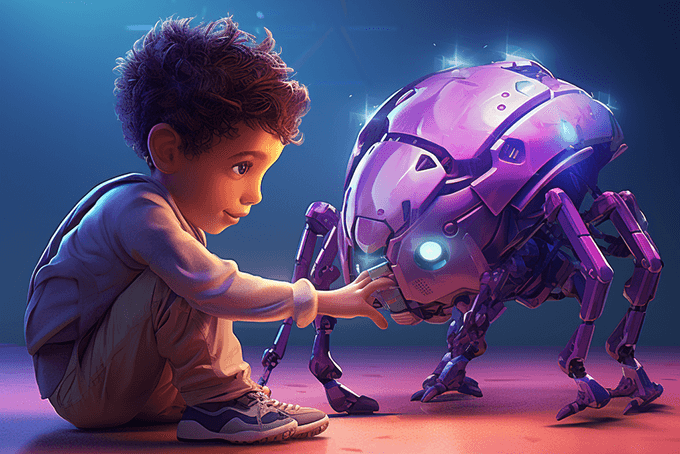Children imitate. That is how they learn, much to our chagrin as parents when some gem rolls out of our two or three-year old child’s mouth, a colorful word or phrase they clearly learned from listening to us. Kids watch and listen to us intently, and do what we do, not necessarily what we say to do. This manner of learning doesn’t end in early childhood. Throughout their development, children and adolescents continue to watch and imitate the adults (and later on peers) that play significant roles in their lives: parents, uncles, older siblings, cousins, teachers, coaches, etc. My friend and colleague John Perricone makes an important point on page 9 of his book Zen and the Art of Public School Teaching: As teachers and parents, we may be unsure of how well our students are learning the lessons we are teaching, but one thing we can be sure of: “we teach who we are.”

This point is particularly important in terms of social-emotional learning. If we want to teach young people to do things like control themselves, restrain impulses, act responsibly, show empathy, listen well, and maintain positive trusting relationships, we must model behaviors that demonstrate those things. If we do a lot of talking about treating people with kindness and respect, and then browbeat, yell, threaten, and publicly humiliate students, we are teaching them to use bullying behavior to get what they want. Simultaneously, we are teaching them that we are hypocrites. It is important, therefore, to be mindful of who we are and what we are being whenever we are in the company of young people.
One practical approach to modeling respectful, positive relationships is to think about relationships in three categories. This cognitive model is based on Martin Buber’s important book I And Thou, one I read years ago. Recently revisiting Buber’s work, I kept thinking about the current state of relationships in schools and the impact of these relationships on social-emotional learning. Being aware of these three distinct ways of relating to others has helped me in my personal and professional relationships, and I believe it has helped me model for my children and my students positive, respectful ways of treating others.
Buber identifies three ways we relate to others: “I-Thou,” “I-You” and “I-It.” The “I-Thou” relationship is one in which people treat others with the highest degree of respect, as genuine equals, whose well-being is as important as one’s own. (The word “thou” often has biblical or religious connotations, but that is not the meaning intended here. English simply does not have a more formal second-person pronoun than “you,” so the word “thou” is used to connote the highest level or respect.) In an “I-Thou” relationship, we behave toward others in a spirit of positive interdependence, appreciating that we are inherently interconnected. This relationship is most often, but not exclusively, experienced with close friends, partners, spouses, and family members. People in an “I-Thou” relationship do not simply treat others as they themselves want to be treated. Rather, they treat others as the others want and need to be treated. Sadly, just because people have children, are married, or have friends doesn’t mean they always treat their children, spouses, or friends with this “I-Thou” level of consideration and respect. Sometimes their actions more closely resemble the “I-You” or “I-It” relationship.
The “I-You” relationship is one in which people view others as valuable human beings with feelings and rights and try to consider this in their interactions with them. This is frequently seen between neighbors, co-workers, and friendly acquaintances. This level of respect, while not as deep as the “I-Thou” relationship, is cordial, polite, and considerate. “I-You” thinking allows us to get along on a daily basis with minimal conflict.
The “I-It” relationship is one in which people view others more as objects than as human beings. We are in an “I-It’ relationship when we think of the other person merely as a means to an end or possibly even as an obstacle in our path. This represents the lowest level of respect. This is seen routinely in interactions between customers and, say, convenience store clerks or between telemarketers and the recipients of their calls. This way of dehumanizing the “other” can be extremely dangerous. It is the way sociopaths and psychopaths think of their “targets” or victims. It is the way soldiers are trained to see their enemies. In some extreme cases, “I-It” thinking has led to genocide. In less extreme cases, it is manifested by indifference, apathy, lack of consideration, rudeness, and disrespect.
‘I-It” Thinking in Schools
One of the many problems with the current emphasis on standardized test scores in schools is the way it encourages and perpetuates “I-It” thinking. Our students’ knowledge and skills are frequently measured, and the results are published on school report cards and in the media. Schools are ranked according to their scores. Some states currently use test scores to help determine teachers’ salaries, and many other states are considering moving in this direction. Such practices place students -or teachers, if one is in administration – in the role of “its” that either help us achieve our goals – being considered a good school, being respected as a good teachers, making a more attractive salary – or as obstacles to those goals.
Another common practice that encourages “I-It’ thinking is the use of labels. It’s hard to find a student who does not have a label these days: A.D.D., A.D.H.D., E.D., G & T, O.D.D., Autistic, Asperger Syndrome, Bullies, Victims, etc. And we increasingly hear teachers labeled, placed into one of two general categories: “good teachers” (those whose students score well on standardized tests) and “bad teachers.” Labels, while well-intended, have an unintended negative consequence: they dehumanize. In times of war, we label “the other” using less-than-human epithets. This allows humans to murder each other while minimizing guilt and shame. If I am destroying something that is less than human -an “It” – I can rationalize an otherwise unthinkable immoral act.
Of course, in schools, no one is being murdered, at least not literally. But the “I-It” thinking that labeling and high stakes testing promotes has a profoundly negative impact on relationships and, therefore, on social-emotional learning. Labeling students and thinking of them as “little test scores with backpacks” has led to teachers “drilling-and-killing” students with boring seat work all day, and coercing them to stay on task, work harder, and do more homework using bribes (incentives), guilt, threats, consequences, punishment, public humiliation, and a variety of other extrinsic motivators. Likewise, administrators who view teachers as “its” may engage in similar behavior: dictating one-size-fits-all curriculum and instruction, mandating more time on reading and mathematics, and engaging in all of the extrinsic motivators listed above to accomplish the questionable goal of raising test scores.
What do students learn in an “I-It” environment? First, far too many learn to hate school and learning. But perhaps even more destructive than that, young people non-consciously learn to treat others as objects to be used, ignored, or treated poorly based on “its” perceived value, “its” relative usefulness in helping them attain personal goals: being popular, feeling important, getting good grades, belonging to the cool clique, being feared, etc. “I-It” thinking is the mental model underlying stereotyping, racism, meanness, relational aggression, and bullying behavior.
Making the Shift Away from “I-It”
Despite the focus on numbers and labels in schools, we, as parents and educators, can be intentional about they ways we think of and behave toward the people we interact with every day. Instead of plopping down an item at the convenience store counter, paying for it, and leaving without so much as a grunt, we can look directly at the person across the counter, smile, and say, “Good morning!” He or she may continue in “I-It” mode, stare at the merchandise, say, “Zat it?” check you out, and dismiss you with, “Havagooday.” But what I’ve experienced time and time again is them returning the “I-You” behavior, smiling back, and saying something like, “Hi. How are YOU today?” It only takes one person to initiate a higher level of respect, and what I have discovered is that it is often reciprocated. Even if it isn’t, at least I feel good about how I behaved and have set a positive example to any child present.
While schools should be the most human of organizations, they have been dehumanized and institutionalized through an obsession with student achievement, as measured by standardized test scores. We can re-humanize them by being more deliberate in the way we think of the children and adults we interact with daily. We can increase our “I-You” relationships by simply thinking of each person as a unique individual who deserves to be treated with consideration and respect regardless of the numbers they generate. This thinking will affect the ways we treat colleagues, parents, students, and supervisors and will be imitated by the young people we work or live with.
It may be unrealistic to think that we can raise our level of respect to “I-Thou” with everyone we meet, but if we think about the most important people we interact with every day in schools, our students, faculty members, etc. as “Thous” — human beings with an extended network of friends and family, a past and future, and inner life; as people who have experienced or are experiencing adversity, loss, and pain in their lives; as someone’s precious child (no matter how old); or as a miracle of nature, a soul, spirit, or spark of divinity; as a part of an ever-increasingly interconnected, inter-dependent world – we may treat others with greater consideration, kindness, and compassion. If we model this kind of behavior for our children and students, we are providing some of the most effective social-emotional lessons they will ever experience. To slightly alter one of Gandhi’s most famous quotations, we will be, then see, the change we want in our children and our schools.



